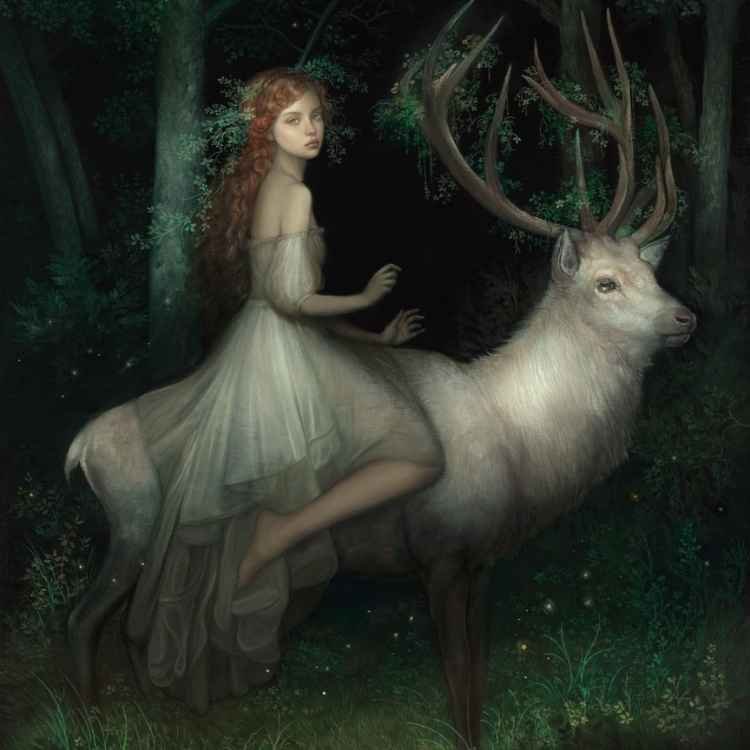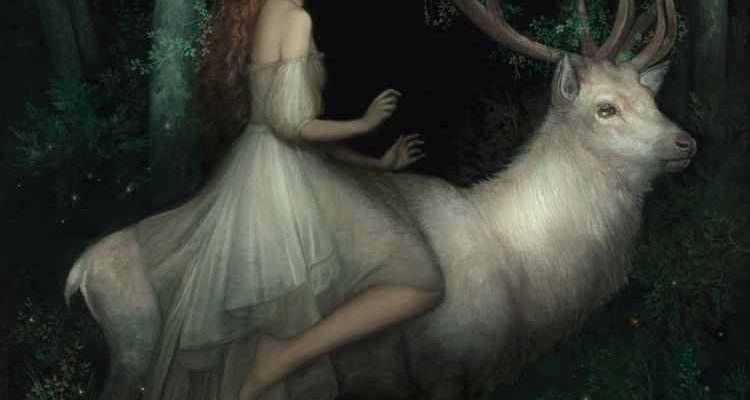
Let’s dive into how this noble animal has inspired stories, art, and beliefs throughout history. From Celtic myths to modern literature, stags show up not just as characters, but as symbols. It’s almost like they carry messages from the past, reminding us of how humans view the natural world. So grab your favorite drink, and let’s explore how the stag has made its mark in culture and folklore.
Celtic Mythology and the Stag
The stag plays a vital role in Celtic mythology, often associated with *fertility* and *rebirth*. You might have heard of Cernunnos, the horned god of fertility, who is frequently depicted with stag antlers. This connection highlights the stag’s symbolism of the cycle of life, much like the changing seasons. In Celtic beliefs, stags were seen as magical creatures that bridged the natural world and the spiritual realm.
In one famous myth, the “Stag of Oisín” leads a warrior named Oisín to the faery realm. Here, the stag represents a guide through life’s transitions—like a mentor who helps you navigate the twists and turns of your journey. It’s fascinating how a single animal can embody such depth and wisdom in storytelling.
A lot of Celtic imagery features the stag as a guardian, which ties into their belief system. They viewed the forest as sacred, and the stag symbolized the spirit of the woods. Just imagine walking through a dense forest, and suddenly spotting a stag—it feels almost like a sign, doesn’t it?
The Stag in Norse Culture
In Norse mythology, the stag represents *strength* and *nobility*. You may have heard of the mythical stag Eikthyrnir, who resides on top of Valhalla. From his antlers, it’s said that rivers flow, symbolizing the life-giving force of nature. This connection to water highlights how the stag is inherently tied to sustenance and vitality.
Moreover, stags were often hunted by warriors as a rite of passage. The hunt was not just a physical challenge, but also a spiritual journey. Successfully hunting a stag could signify a young warrior’s coming-of-age. It’s a powerful way of illustrating the bond between humans and the majestic creature—they sought to honor it, not just conquer it.
Similarly, in various sagas and legends, stags serve as messengers or harbingers of change. For instance, spotting a stag might foretell a major life event, much like we look for signs in our own lives. The Norse took these encounters seriously, often interpreting them as significant moments that demanded reflection.
The Stag in Native American Beliefs
In many Native American cultures, the stag, often referred to as the deer, symbolizes *grace*, *gentleness*, and an *connection to the earth*. Different tribes view the deer as a part of their spiritual connection to nature, representing intuition and awareness. For instance, the Iroquois believed that the deer could teach people about humility and respect for nature.
Some tribes also see the stag as a guardian spirit. They believe that encountering a stag in the wild is an omen of good fortune or a reminder to stay grounded. It’s like an intuitive nudge, encouraging you to pause and reflect on your current path. This insight reveals a deep respect for the animal, which is not merely seen as game but as a fellow being deserving of honor.
Moreover, stories passed down through generations often depict stags guiding lost souls, symbolizing their role as protectors. Whether it’s during a hunting expedition or a vision quest, the stag embodies a connection that reminds humans of their place in the ecosystem. It’s a beautiful reminder of the balance we must maintain in our interactions with nature.
Stags in Literature and Art
Throughout literature and art, the stag has been a compelling figure, often representing *nobility* and *sacrifice*. In many classic novels, stags symbolize the untamed beauty of nature, serving as a backdrop for human emotions and conflicts. Think of the classic image of a hunter gazing at a majestic stag—this scene is symbolic of the struggle between civilization and the wild.
For instance, in Walt Whitman’s poetry, he often reflects on nature, using the stag to illustrate freedom and wildness. This connection between the natural world and human introspection creates a layer of meaning that resonates deeply with readers. The stag becomes a metaphor for our own quests for identity and understanding, serving as a mirror to our lives.
Artistic representations of stags also draw on their gracefulness. In various cultures, paintings and sculptures frequently depict stags in motion, evoking a sense of peace and harmony. From ancient cave paintings to modern art, the stag transcends time as a universal symbol of beauty.
Even in fairy tales, stags often play a role. They can be magical beings that lead characters on enchanting adventures, reminding us of the magic that exists in everyday life. Isn’t it fascinating how literature and art connect us with these timeless symbols?
Modern Symbolism of the Stag
In contemporary culture, the stag continues to embody *strength* and *leadership*. Many brands and organizations use the stag as a logo or mascot, symbolizing qualities like resilience and determination. Think about the iconic Guinness logo featuring a stag—it conveys a sense of rich heritage and craftsmanship.
Moreover, the stag has found a place in our language and common phrases. When people refer to someone as a “stag”, they often highlight traits like bravery or integrity. It’s interesting how cultural symbols evolve yet remain rooted in their original meanings. The stag serves as a reminder of our intrinsic connection to nature and its teachings.
As we move further into a world that increasingly values sustainability and awareness of environmental issues, the stag represents a call to reconnect with nature. The idea of respecting wildlife and understanding our role in the ecosystem is more relevant than ever. Just like the stories of old, today’s narratives about stags encourage us to cherish our natural surroundings.
The stag is far more than just a beautiful creature wandering in the woods. It’s a profound symbol woven into the fabric of various cultures and folklore. Whether representing *strength*, *spirituality*, or *grace*, the stag connects us across generations. Its portrayal in myths, art, and literature reminds us of the lessons nature imparts—urging us to honor our environment and our place within it.
So, the next time you hear a story or spot a majestic stag, take a moment to appreciate the depth behind its presence. It carries tales of old, whispers of wisdom, and the wild spirit of nature. Isn’t it amazing how something as simple as a stag can enrich our lives, reminding us of the beauty all around us? Let’s carry that appreciation into our everyday lives, nurturing the connection between us and the natural world.

